|
|
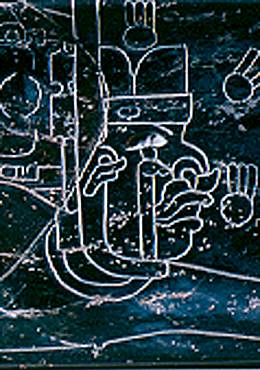
|
Royal responsibilities were concerned with not only social, economic, and political affairs but also ritual performance. The figure incised on this ritual object (detail) is in the guise of the Olmec Maize God. Such figures are frequently found on Olmec-style celts and "spoons," enigmatic ritual objects related to religious rites and political authority.
Incised Ritual Object. |
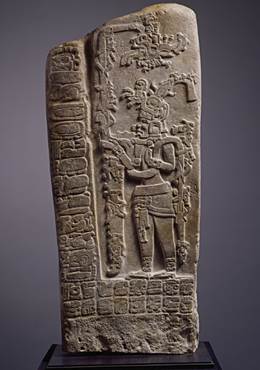
|
The process of conjuring otherworldly spirits might bring forth an apparition known as the Vision Serpent, from whose open mouth emerged the invoked sacred being, either a deity or an ancestor. This stela illustrates a vision quest by a Maya ruler who wears the headband of kingship on his forehead, perhaps indicating that the quest was part of his accession rituals.
Stela |
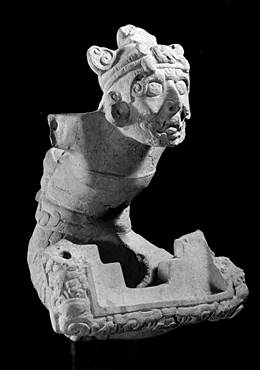
|
This divination figure, although incomplete, has a forward-leaning pose and staring eyes that suggest a trance state. His jaguar ears imply a ruler's transformation into his way, because kings and jaguars were closely linked as powerful beings. The figure's hipcloth is marked with crossed bones, and on his back he wears a belt head resembling the Principal Bird Deity with pendant plaques, further confirmation of his royal status.
Divination Figure |
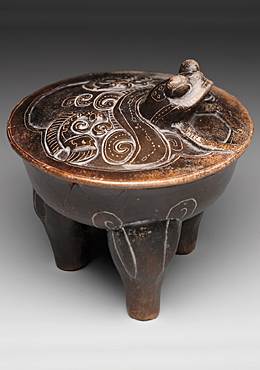
|
One means of entering a trance state involved ingesting hallucinogenic substances, including those derived from nerve toxins found in the glands of a specific toad. The toad here, whose glands are indicated by the spotted elements behind its eyes, seems to emerge from the water's surface depicted on the vessel's lid.
Tripod Lidded Vessel with Toad |
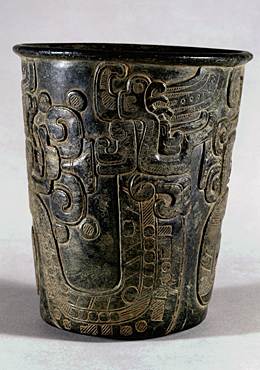
|
This small stone cup depicting two Vision Serpents may have held such a hallucinogen used to enter a trance state. The apparition of a Vision Serpent materialized as a result of the trance state. Here the serpent's mouth emits a sacred liquid.
Carved Vessel Depicting Vision Serpent |

|
This incised peccary skull was recovered from a tomb which dates to the Late Classic. The skull, however, is Early Classic in style, an heirloom commemorating a ritual event that took place in AD 376. The scene depicts two seated figures framed by a quatrefoil cartouche, implying that they are in a cave or other sacred location. They face each other with a personified altar and bound stela between them.
Incised Peccary Skull. |
top home |
Copyright 2005 Los Angeles County Museum of Art